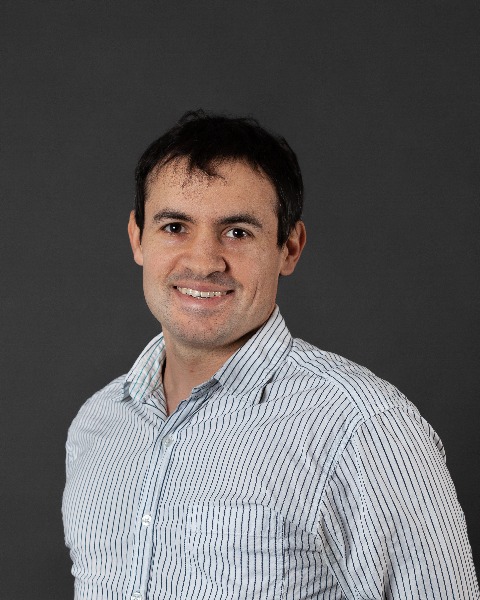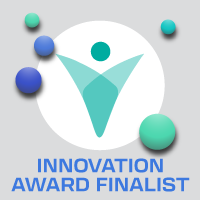Automation Technologies (Room 210B)
Innovation Award
Automated High-Throughput Microhistology Workflows Using Liquid Handling Robots for Coplanar Hydrogel Embedding of 3D Cell Models
Monday, February 5, 2024
11:30 AM - 12:00 PM EST
Room/Location: 210B
Sponsored By
.png)

Thomas Valentin, PhD
CSEM SA, Obwalden, Switzerland
Abstract: Complex 3D cell models opportunities in drug screening, disease modelling, clinical trial design and personalized medicine are booming. These models are crucial for advancing research and therapy due to their accurate replication of human tissue characteristics. Histology is considered the gold standard for studying tissue anatomy and holds immense promise in accessing further information from these 3D models.
However, current histological processes are inefficient and costly to apply to 3D cell models. The manual labor and poor alignment of samples due to their small size, ranging from 100 to 1000 µm, significantly lowers analysis throughput. Manual random loading of samples into the embedding material towards sectioning requires dozens of replicates to achieve reliable results, while only 5–10 microtissues in the same focal plane provides sufficient information for robust analysis. Automated microhistology is required to fully unlock the potential of 3D cell models and meet the need of standardized, high-throughput analysis tools and workflows (Vuille-dit-Bille et al. “Tools for manipulation and positioning of microtissues”, Lab Chip, 2022).
In collaboration with the Northwestern Switzerland University of Applied Sciences (FHNW) and Hamilton Bonaduz AG, CSEM now proudly presents 'MicroHisto', a groundbreaking workflow designed to address the challenges associated with spheroid, microtissue and organoid histology. MicroHisto represents an innovative combination of hydrogel labware and automated liquid handling, revolutionizing the precise positioning of organoids while enhancing compatibility with laboratory automation, and thus paving the way for high-throughput screening.
MicroHisto introduces the Hydrogel well-plate (HistoBrick), a novel labware solution that enables reliable, coplanar alignment of spheroids and organoids parallel to the sectioning plane. Our recent study, highlighted in Nature Scientific Reports (Heub et al. “Coplanar embedding of multiple 3D cell models in hydrogel towards high-throughput micro-histology”, 2022), demonstrates the co-planar positioning of 150-200 µm diameter microtissues arrayed on a plane parallel to the microtome sectioning plane. The HistoBrick significantly enhances throughput and efficiency by seamlessly fitting within traditional histology cassettes, minimizing sample loss, and optimizing the histological process. This allows for the simultaneous analysis of up to 96 samples with a minimal number of sections.
A key strength of MicroHisto lies in the seamless integration with liquid handling robots, enabling high-precision, automated transfer (picking-and-placing) of organoids from cell culture multi-well plates to the HistoBrick. Leveraging the Hamilton Microlab VANTAGE platform equipped with state-of-the-art MagPip pipetting technology, MicroHisto achieves unparalleled precision and efficiency in low-volume pipetting ( < 3 µL).
MicroHisto represents a major advancement in organoid technology. By streamlining workflows, ensuring reproducibility, and maximizing efficiency, it tackles long-standing challenges in spheroid, microtissue and organoid histology. Its ability to enhance alignment precision, minimize sample loss, and integrate with automation standards positions MicroHisto as a transformative technology in preclinical drug testing and precision medicine.
However, current histological processes are inefficient and costly to apply to 3D cell models. The manual labor and poor alignment of samples due to their small size, ranging from 100 to 1000 µm, significantly lowers analysis throughput. Manual random loading of samples into the embedding material towards sectioning requires dozens of replicates to achieve reliable results, while only 5–10 microtissues in the same focal plane provides sufficient information for robust analysis. Automated microhistology is required to fully unlock the potential of 3D cell models and meet the need of standardized, high-throughput analysis tools and workflows (Vuille-dit-Bille et al. “Tools for manipulation and positioning of microtissues”, Lab Chip, 2022).
In collaboration with the Northwestern Switzerland University of Applied Sciences (FHNW) and Hamilton Bonaduz AG, CSEM now proudly presents 'MicroHisto', a groundbreaking workflow designed to address the challenges associated with spheroid, microtissue and organoid histology. MicroHisto represents an innovative combination of hydrogel labware and automated liquid handling, revolutionizing the precise positioning of organoids while enhancing compatibility with laboratory automation, and thus paving the way for high-throughput screening.
MicroHisto introduces the Hydrogel well-plate (HistoBrick), a novel labware solution that enables reliable, coplanar alignment of spheroids and organoids parallel to the sectioning plane. Our recent study, highlighted in Nature Scientific Reports (Heub et al. “Coplanar embedding of multiple 3D cell models in hydrogel towards high-throughput micro-histology”, 2022), demonstrates the co-planar positioning of 150-200 µm diameter microtissues arrayed on a plane parallel to the microtome sectioning plane. The HistoBrick significantly enhances throughput and efficiency by seamlessly fitting within traditional histology cassettes, minimizing sample loss, and optimizing the histological process. This allows for the simultaneous analysis of up to 96 samples with a minimal number of sections.
A key strength of MicroHisto lies in the seamless integration with liquid handling robots, enabling high-precision, automated transfer (picking-and-placing) of organoids from cell culture multi-well plates to the HistoBrick. Leveraging the Hamilton Microlab VANTAGE platform equipped with state-of-the-art MagPip pipetting technology, MicroHisto achieves unparalleled precision and efficiency in low-volume pipetting ( < 3 µL).
MicroHisto represents a major advancement in organoid technology. By streamlining workflows, ensuring reproducibility, and maximizing efficiency, it tackles long-standing challenges in spheroid, microtissue and organoid histology. Its ability to enhance alignment precision, minimize sample loss, and integrate with automation standards positions MicroHisto as a transformative technology in preclinical drug testing and precision medicine.

.png)
